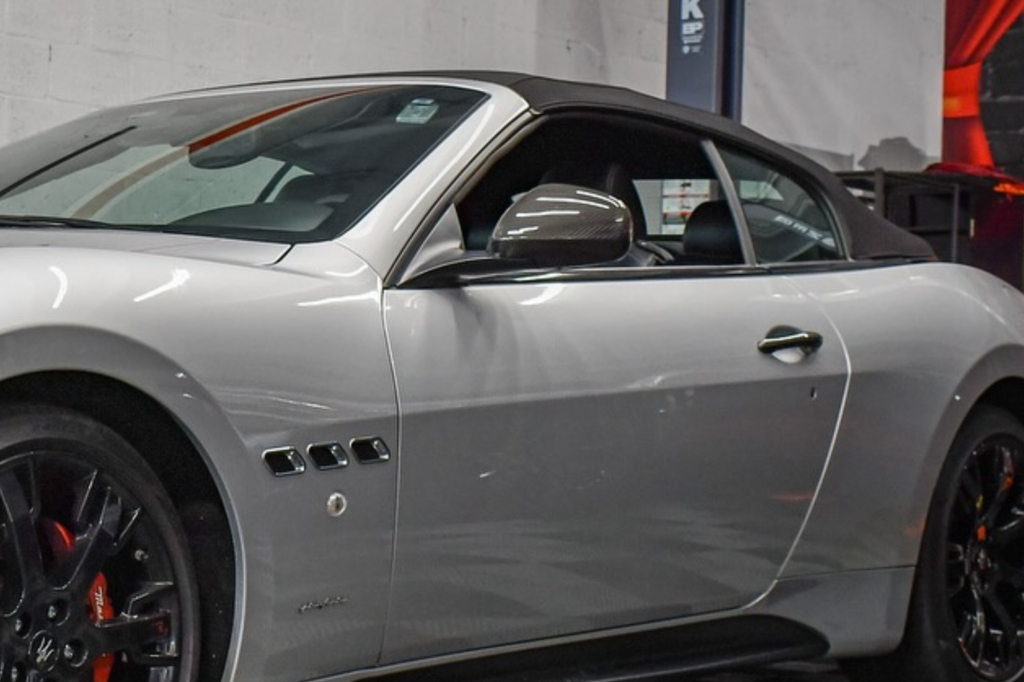Your car’s paint can suffer damage from sources like bird droppings and tree sap, which contain corrosive elements that etch and stain. Sun exposure causes UV-induced fading and oxidation, turning your paint dull. Road salt accelerates corrosion, especially in moist conditions, particularly affecting lower panels and undercarriages. Acid rain also poses a risk by etching away protective layers, resulting in spotty finishes. Infrequent washing compounds these problems by allowing contaminants to linger. Combat these issues with routine washes, prompt contaminant removal, and apply paint protection film (PPF) for a durable barrier against environmental damage. Understanding these threats will help you maintain your car’s pristine appearance and long-term value.
Key Takeaways
- Bird droppings contain uric acid that immediately etches and corrodes car paint.
- Tree sap hardens over time, making it challenging to remove without scratching the paint.
- Sun exposure causes UV-induced fading, oxidation, and dullness in car paint.
- Road salt accelerates corrosion, particularly affecting lower panels and the undercarriage.
- Acid rain etches away protective layers, leading to spots and dull paint finishes.
Bird Droppings
Bird droppings are a surprisingly common threat to your car’s paint job. They contain uric acid, which is highly corrosive and can quickly cause car paint damage. When bird droppings land on your vehicle, they begin to etch into the paint almost immediately. This can lead to unsightly blemishes and, if left unattended, permanent damage.
The acidity of the droppings can break down the protective layers of your car’s paint, compromising its integrity and appearance.
To protect your car paint from damage caused by bird droppings, act quickly. As soon as you notice droppings on your vehicle, remove them using a soft cloth and a gentle cleaning solution designed for automotive finishes. Avoid harsh chemicals, as they may further damage the paint.
Regularly washing your car and applying a protective layer can help create a barrier against these acidic assaults. These preventive measures reduce the risk of contaminants coming into direct contact with the paint, minimizing potential damage and preserving your vehicle’s appearance over time.
Tree Sap
While bird droppings are a common and corrosive threat to your vehicle’s paint, tree sap presents a different kind of challenge.
Tree sap is notoriously sticky and hard to remove, often leading to stains and potential damage if left untreated. The sap can harden over time, making it more difficult to clean without risking scratches to the paint surface. It’s essential to address sap quickly to avoid these issues.
To prevent car paint damage from tree sap, park your car away from trees whenever possible. If parking under trees is unavoidable, consider using a paint protection film Miami provider to apply a protective layer. This film acts as a barrier, making it easier to clean off sap without affecting the underlying paint.
When sap does land on your car, remove it promptly. Use a soft cloth with a gentle cleaner designed for automotive finishes, ensuring you don’t use harsh chemicals that could harm the paint.
Always follow up with washing and waxing to restore the protective layer. By taking these steps, you’ll preserve your car’s appearance and mitigate the risk of sap-related paint damage.
Sun Exposure
Though often overlooked, the sun’s relentless UV rays and exposure can greatly damage your car’s paint over time. These ultraviolet rays penetrate the clear coat, causing chemical reactions that lead to fading, oxidation, and loss of shine.
You might notice your car’s vibrant colors turning dull and chalky, a clear sign of oxidation. This occurs when UV rays break down the paint’s molecular structure, leading to a brittle, compromised surface.
To protect your car, you should park in shaded or covered areas whenever possible. Using protective treatments can help create a barrier, reducing exposure to harmful elements and minimizing potential damage over time.
Regular washing and detailing help remove surface contaminants that could amplify UV effects. Make sure to use gentle, pH-balanced cleaning products to prevent additional harm to the paint.
Investing in paint protection film service is another strategic measure, offering a durable shield against UV exposure while preserving the car’s aesthetic.
Monitor your car’s exterior regularly for signs of sun damage, addressing any issues swiftly. By implementing these steps, you can effectively safeguard your vehicle against the sun’s harsh effects, maintaining its value and appearance.

Road Salt
When winter arrives, and roads are treated to prevent ice, road salt becomes a significant threat to your car’s paintwork. Salt, primarily composed of sodium chloride, accelerates the corrosion process. As it mixes with moisture, it forms a corrosive brine that clings to your vehicle’s surfaces.
Pay particular attention to the lower panels, wheel wells, and undercarriage, which are most vulnerable to salt accumulation. This corrosive environment can lead to paint blistering and, eventually, expose the metal underneath, promoting rust.
To combat this, you should regularly wash your car during winter, focusing on rinsing off salt deposits thoroughly. Use a high-pressure hose to reach hidden areas where salt might linger.
Consider applying a protective layer before winter to create a barrier between your car’s paint and the corrosive effects of road salt. Using long-lasting protection can help minimize salt-induced damage, preserving your vehicle’s appearance and durability.
If you notice any chips or scratches, address them promptly to prevent salt from seeping into the exposed areas. Routine inspections and maintenance can help you catch potential issues early, ensuring your car’s paint remains intact throughout the harsh winter months.
Acid Rain
Acid rain poses a significant threat to your car’s paint, subtly yet relentlessly etching away its protective layers. When rainwater mixes with pollutants like sulfur dioxide and nitrogen oxides, it becomes acidic. This acidity can degrade your car’s clear coat over time, leaving it vulnerable to further damage. You may notice spots or a dull finish, indicating the paint’s compromised integrity.
To protect your vehicle, consider the chemical interaction between acid rain and your car’s surface. Acid rain can seep into microscopic crevices, reacting with the paint and causing blemishes. Applying a protective layer can help create a barrier that repels acidic deposits, acting as a shield to absorb environmental wear and prevent damage to your car’s finish.
When you spot acid rain residues, rinse your car promptly with clean water. This reduces the time it takes for acid rain to interact with the surface. For a meticulous approach, use a pH-balanced car wash soap to neutralize residual acids.
Consistent maintenance helps preserve your car’s aesthetic appeal and safeguards its resale value. Regular attention and informed actions can mitigate acid rain’s effects, maintaining your vehicle’s pristine finish.
Infrequent Washing
Neglecting regular washing can deceptively accelerate damage to your car’s paint. When you don’t wash your car frequently, contaminants like dirt, pollen, and grime accumulate on the surface. These particles may seem harmless at first, but they can embed into the clear coat, causing micro-abrasions. Over time, these small scratches can lead to a dull finish and compromised paint integrity.
Additionally, substances like bird droppings and tree sap become more difficult to remove if left unattended, etching into the paint and leaving permanent marks. Regular washing helps prevent these issues, maintaining your car’s glossy appearance.
To effectively wash your car, start by using a pH-balanced car shampoo and a soft microfiber mitt. This reduces the risk of scratches during the cleaning process.
Rinse thoroughly to remove all soap residues, as any leftovers can create spots or streaks. Don’t forget to dry the surface with a clean microfiber towel, reducing water spots from minerals.
In Summary
To protect your car’s paint, you need to stay proactive. Regularly wash your vehicle and apply paint protection film to create a durable barrier against hazards like bird droppings, tree sap, and road salt. Park in shaded areas or use a car cover to shield against UV damage. Be mindful of environmental threats like acid rain, and wash your car frequently to remove contaminants. By understanding these risks and taking preventive measures, you’ll maintain your car’s stunning appearance and value. For expert protection, trust Tint Haus Customs to help safeguard your vehicle from everyday wear and tear.
